Opinion & Analysis
Are Cobra’s F7 Junior One-Length Irons Good for Youth Golf?
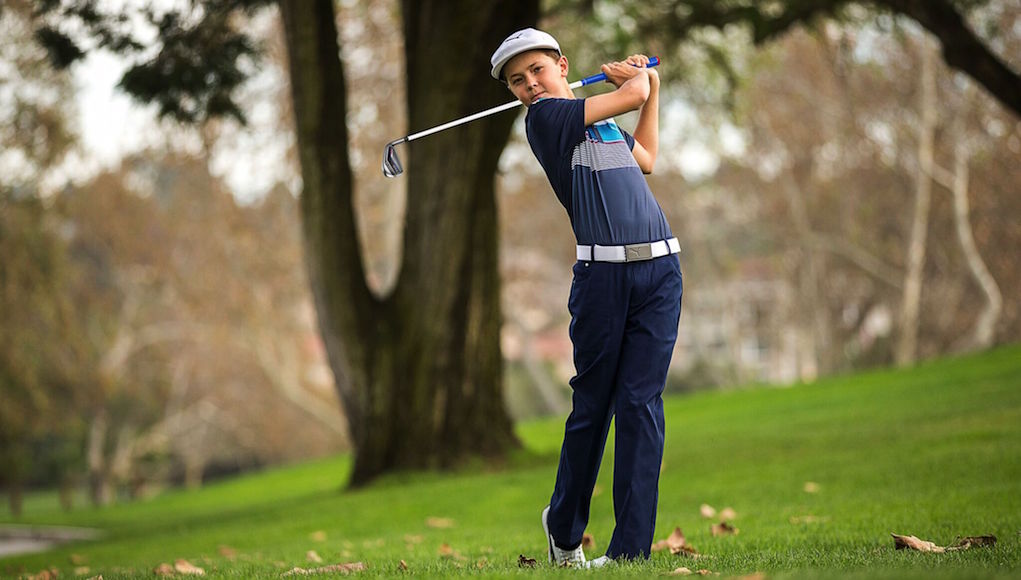
Golf equipment companies that make clubs for junior golfers are in a difficult position. They need to look out for their business by turning profits, developing brand loyalty and ultimately making their customers happy. But these equipment companies also need to look out for the future of the sport, and get clubs in the hands of junior golfers that will properly develop their golf games.
As such, I want to have a conversation about Cobra’s new Junior F7 One irons, which are single-length golf clubs made for juniors aged 13-15 years old, and the possible consequences (negative or positive) of putting these clubs in their hands.
First, I’d like to commend Cobra on making a set of irons that may make the game easier for more junior golfers, and for being bold in its chase to simplify the game. The single-length iron sets were developed by Tom Olsavsky, the Vice President of R&D for Cobra, after thorough testing, study and input from Mike Schy, a proponent of The Golfing Machine theories and Bryson DeChambeau’s longtime swing coach. Although the single-length system is not widely accepted — not yet, at least — the concept of single-length irons is such that a golfer doesn’t need to change his/her swing between irons because they’re all the same length, weight and have the same lie angle. To make the golf ball go different distances, single-length irons clubs use different lofts and head designs. That certainly can simply things.
Junior golf equipment has come a long way from the days of simply cutting down adult sets, or using your father’s hand-me-downs. There are now many different options for golfers of different sizes and strengths, and that’s a wonderful thing. Also, Cobra gave these particular irons serious engineering attention and similar technologies as the adult, one-length sets.
Like the adult versions, the F7 Junior One irons have TechFlo — a technology designed to help the longer irons fly higher and farther — and they also have PwrShell faces, which means they are thinner and more forgiving across the face. The grooves are milled and designed to produce the proper spin for each individual iron. The clubs come stock with Lamkin EPDM REL-Red, White and Blue grips and graphite Fujikura Fuel Junior shafts (36.25 inches in length), and they come in a five-piece set (5-7-9-PW-SW) that sells for $449 available now at retail and online.
I question the effectiveness of buying a single-length club for a junior golfer who’s 13-15 years old — a fairly wide range of physical characteristics there — without getting fit, but that’s another argument for a different day. My particular worry is for junior golfers who plan to take the game seriously, and have hopes of competing in high school and attaining a college scholarship. Along with the benefits, there could be longterm drawbacks of using single-length irons at a young age.
As a former NCAA Division I golfer who used progressive, or “normal” length irons his entire career, I had a mostly positive experience with the single-length irons — for which I was fully fitted — during my experiment for a GolfWRX review. I’ve since switched back to a normal-length set of irons because of the limitations I felt with trajectory and distance control; the more time went on, the more I felt long irons went too low and short irons went too high. My shotmaking was also suffering around the greens.
For me, using single-length irons was an experiment that I underwent by choice, and switching back to “normal” irons was natural because my swing and mentality had developed using progressive-length irons. My fear for junior golfers ages 13-15 who are given a set of single-length clubs is that their swings would be ingrained under the single-length concept… a concept that isn’t necessarily for everyone. Junior golfers in the developing stage of their bodies and swings are impressionable, and switching back from the single-length set into normal length irons later in life could prove difficult. Also, their shotmaking could be sacrificed in the short- and long-run.
I spoke to top-100 fitter Scott Felix of Felix Clubworks, and Ryan Johnson, the 2015 Michigan Amatuer champion and a fitter at Carl’s Golfland, for their expert opinions on the topic. Felix said while the single-length system could be beneficial using the relatively shorter 5 iron in terms of contacting the center of the face more consistently — but not in creating more speed — the longer wedges may take away from touch and feel around the greens. He said while he wouldn’t necessarily recommend single-length irons to a junior golfer, he would evaluate their performance with the clubs and help the junior get what they play the best. Johnson added that the single-length system may be easier since it’s only one swing in theory, but that the system might work best for a one-plane type swing (which The Golfing Machine calls a “zero shift”) and for junior golfers who understand and embrace the concept. As an accomplished player himself, Johnson once tried the one-length system and found difficulty with the short irons and wedges because they flew too high and to the left, and said “I couldn’t even think about hitting a bunker shot with them.”
“I wouldn’t tell a junior golfer or a parent not to (buy a single-length set),” Johnson said. “I’d just give them a rundown of the concept and what it entails.”
Olsavsky, on the other hand, doesn’t see a downside to the single-length system. “If a kid can hit a 7-iron, [he or she] can hit every club in the bag,” he says, and that one-length irons will ultimately put less stress on the mind and body throughout a junior’s life if they stick to one-length irons. He described a short game test that Cobra performed on one-length wedges vs. normal-length wedges, where a group of 2-12 handicappers hit 20- and 30-yard shots, as well as a chip shot and a flop shot. The results of the test showed that shots hit with single-length wedges finished closer to the hole and were more preferred in three of the four locations.
Regardless of performance, however, junior golfers are influenced heavily by what they see on TV or what their friends are doing.
“Since working with Bryson DeChambeau to help bring this concept to life in two adult sets of irons earlier this year, we have had requests from retailers and consumers to offer a set of one-length irons for junior golfers,” Olsavsky said in a press release.
So let’s say a junior’s favorite golfer is Bryson DeChambeau and they see him using single-length irons. Obviously, they ask their parents to buy them a set of single-length irons because it’s “cool.”
Parents should proceed with caution here. If a child wants to compete at a high level, it’s a bigger decision than simply saying, “Oh, this is what the kid says he wants so I’m going to buy it for him.” Let’s remember, DeChambeau himself grew up using a conventional length set of irons and later switched.
That’s not to say single-length is the wrong decision, either. Some kids will absolutely thrive under a single-length system, and in turn have confidence they wouldn’t have otherwise. The game may be simplified and come easier for the junior golfer because of it, and make golf fun.
For others, their development may be stunted. That’s why seeking professional guidance in this circumstance is so crucial.

Cobra has this to say about the performance aspects of the clubs.
“We tested these irons among a wide range of skill levels ranging in age from 13-15 and we found that universally they delivered more consistency and better performance for these younger golfers,” Olavsky said in a press release.
Personally, I don’t doubt that to be the case. In a vacuum, the irons surely perform really well (it’s more of the long-term effects that have me nervous).
Let me make this clear: I’m not bashing Cobra for providing single-length irons as an OPTION for the youth, I’m simply warning parents and junior golfers that the decision to buy these clubs is an important one. It will have lasting effects, whether positive or negative. Before buying a set of single-length irons for a junior golfer, please have this conversation with them under the supervision of a professional fitter or teaching professional.
We don’t want to rob golf of the next Justin Thomas just because he/she idolizes Bryson DeChambeau, or vice versa.
- LIKE36
- LEGIT4
- WOW1
- LOL4
- IDHT4
- FLOP3
- OB5
- SHANK40
19th Hole
Vincenzi’s 2024 Zurich Classic of New Orleans betting preview

The PGA TOUR heads to New Orleans to play the 2023 Zurich Classic of New Orleans. In a welcome change from the usual stroke play, the Zurich Classic is a team event. On Thursday and Saturday, the teams play best ball, and on Friday and Sunday the teams play alternate shot.
TPC Louisiana is a par 72 that measures 7,425 yards. The course features some short par 4s and plenty of water and bunkers, which makes for a lot of exciting risk/reward scenarios for competitors. Pete Dye designed the course in 2004 specifically for the Zurich Classic, although the event didn’t make its debut until 2007 because of Hurricane Katrina.
Coming off of the Masters and a signature event in consecutive weeks, the field this week is a step down, and understandably so. Many of the world’s top players will be using this time to rest after a busy stretch.
However, there are some interesting teams this season with some stars making surprise appearances in the team event. Some notable teams include Patrick Cantlay and Xander Schauffele, Rory McIlroy and Shane Lowry, Collin Morikawa and Kurt Kitayama, Will Zalatoris and Sahith Theegala as well as a few Canadian teams, Nick Taylor and Adam Hadwin and Taylor Pendrith and Corey Conners.
Past Winners at TPC Louisiana
- 2023: Riley/Hardy (-30)
- 2022: Cantlay/Schauffele (-29)
- 2021: Leishman/Smith (-20)
- 2019: Palmer/Rahm (-26)
- 2018: Horschel/Piercy (-22)
- 2017: Blixt/Smith (-27)
2024 Zurich Classic of New Orleans Picks
Tom Hoge/Maverick McNealy +2500 (DraftKings)
Tom Hoge is coming off of a solid T18 finish at the RBC Heritage and finished T13 at last year’s Zurich Classic alongside Harris English.
This season, Hoge is having one of his best years on Tour in terms of Strokes Gained: Approach. In his last 24 rounds, the only player to top him on the category is Scottie Scheffler. Hoge has been solid on Pete Dye designs, ranking 28th in the field over his past 36 rounds.
McNealy is also having a solid season. He’s finished T6 at the Waste Management Phoenix Open and T9 at the PLAYERS Championship. He recently started working with world renowned swing coach, Butch Harmon, and its seemingly paid dividends in 2024.
Keith Mitchell/Joel Dahmen +4000 (DraftKings)
Keith Mitchell is having a fantastic season, finishing in the top-20 of five of his past seven starts on Tour. Most recently, Mitchell finished T14 at the Valero Texas Open and gained a whopping 6.0 strokes off the tee. He finished 6th at last year’s Zurich Classic.
Joel Dahmen is having a resurgent year and has been dialed in with his irons. He also has a T11 finish at the PLAYERS Championship at TPC Sawgrass which is another Pete Dye track. With Mitchell’s length and Dahmen’s ability to put it close with his short irons, the Mitchell/Dahmen combination will be dangerous this week.
Taylor Moore/Matt NeSmith +6500 (DraftKings)
Taylor Moore has quickly developed into one of the more consistent players on Tour. He’s finished in the top-20 in three of his past four starts, including a very impressive showing at The Masters, finishing T20. He’s also finished T4 at this event in consecutive seasons alongside Matt NeSmith.
NeSmith isn’t having a great 2024, but has seemed to elevate his game in this format. He finished T26 at Pete Dye’s TPC Sawgrass, which gives the 30-year-old something to build off of. NeSmith is also a great putter on Bermudagrass, which could help elevate Moore’s ball striking prowess.
- LIKE6
- LEGIT1
- WOW1
- LOL0
- IDHT0
- FLOP2
- OB1
- SHANK1
19th Hole
Vincenzi’s 2024 LIV Adelaide betting preview: Cam Smith ready for big week down under

After having four of the top twelve players on the leaderboard at The Masters, LIV Golf is set for their fifth event of the season: LIV Adelaide.
For both LIV fans and golf fans in Australia, LIV Adelaide is one of the most anticipated events of the year. With 35,000 people expected to attend each day of the tournament, the Grange Golf Club will be crawling with fans who are passionate about the sport of golf. The 12th hole, better known as “the watering hole”, is sure to have the rowdiest of the fans cheering after a long day of drinking some Leishman Lager.
The Grange Golf Club is a par-72 that measures 6,946 yards. The course features minimal resistance, as golfers went extremely low last season. In 2023, Talor Gooch shot consecutive rounds of 62 on Thursday and Friday, giving himself a gigantic cushion heading into championship Sunday. Things got tight for a while, but in the end, the Oklahoma State product was able to hold off The Crushers’ Anirban Lahiri for a three-shot victory.
The Four Aces won the team competition with the Range Goats finishing second.
*All Images Courtesy of LIV Golf*
Past Winners at LIV Adelaide
- 2023: Talor Gooch (-19)
Stat Leaders Through LIV Miami
Green in Regulation
- Richard Bland
- Jon Rahm
- Paul Casey
Fairways Hit
- Abraham Ancer
- Graeme McDowell
- Henrik Stenson
Driving Distance
- Bryson DeChambeau
- Joaquin Niemann
- Dean Burmester
Putting
- Cameron Smith
- Louis Oosthuizen
- Matt Jones
2024 LIV Adelaide Picks
Cameron Smith +1400 (DraftKings)
When I pulled up the odds for LIV Adelaide, I was more than a little surprised to see multiple golfers listed ahead of Cameron Smith on the betting board. A few starts ago, Cam finished runner-up at LIV Hong Kong, which is a golf course that absolutely suits his eye. Augusta National in another course that Smith could roll out of bed and finish in the top-ten at, and he did so two weeks ago at The Masters, finishing T6.
At Augusta, he gained strokes on the field on approach, off the tee (slightly), and of course, around the green and putting. Smith able to get in the mix at a major championship despite coming into the week feeling under the weather tells me that his game is once again rounding into form.
The Grange Golf Club is another course that undoubtedly suits the Australian. Smith is obviously incredibly comfortable playing in front of the Aussie faithful and has won three Australian PGA Championship’s. The course is very short and will allow Smith to play conservative off the tee, mitigating his most glaring weakness. With birdies available all over the golf course, there’s a chance the event turns into a putting contest, and there’s no one on the planet I’d rather have in one of those than Cam Smith.

Louis Oosthuizen +2200 (DraftKings)
Louis Oosthuizen has simply been one of the best players on LIV in the 2024 seas0n. The South African has finished in the top-10 on the LIV leaderboard in three of his five starts, with his best coming in Jeddah, where he finished T2. Perhaps more impressively, Oosthuizen finished T7 at LIV Miami, which took place at Doral’s “Blue Monster”, an absolutely massive golf course. Given that Louis is on the shorter side in terms of distance off the tee, his ability to play well in Miami shows how dialed he is with the irons this season.
In addition to the LIV finishes, Oosthuizen won back-to-back starts on the DP World Tour in December at the Alfred Dunhill Championship and the Mauritus Open. He also finished runner-up at the end of February in the International Series Oman. The 41-year-old has been one of the most consistent performers of 2024, regardless of tour.
For the season, Louis ranks 4th on LIV in birdies made, T9 in fairways hit and first in putting. He ranks 32nd in driving distance, but that won’t be an issue at this short course. Last season, he finished T11 at the event, but was in decent position going into the final round but fell back after shooting 70 while the rest of the field went low. This season, Oosthuizen comes into the event in peak form, and the course should be a perfect fit for his smooth swing and hot putter this week.

- LIKE10
- LEGIT2
- WOW0
- LOL0
- IDHT0
- FLOP0
- OB0
- SHANK0
Opinion & Analysis
The Wedge Guy: What really makes a wedge work? Part 1

Of all the clubs in our bags, wedges are almost always the simplest in construction and, therefore, the easiest to analyze what might make one work differently from another if you know what to look for.
Wedges are a lot less mysterious than drivers, of course, as the major brands are working with a lot of “pixie dust” inside these modern marvels. That’s carrying over more to irons now, with so many new models featuring internal multi-material technologies, and almost all of them having a “badge” or insert in the back to allow more complex graphics while hiding the actual distribution of mass.
But when it comes to wedges, most on the market today are still single pieces of molded steel, either cast or forged into that shape. So, if you look closely at where the mass is distributed, it’s pretty clear how that wedge is going to perform.
To start, because of their wider soles, the majority of the mass of almost any wedge is along the bottom third of the clubhead. So, the best wedge shots are always those hit between the 2nd and 5th grooves so that more mass is directly behind that impact. Elite tour professionals practice incessantly to learn to do that consistently, wearing out a spot about the size of a penny right there. If impact moves higher than that, the face is dramatically thinner, so smash factor is compromised significantly, which reduces the overall distance the ball will fly.
Every one of us, tour players included, knows that maddening shot that we feel a bit high on the face and it doesn’t go anywhere, it’s not your fault.
If your wedges show a wear pattern the size of a silver dollar, and centered above the 3rd or 4th groove, you are not getting anywhere near the same performance from shot to shot. Robot testing proves impact even two to three grooves higher in the face can cause distance loss of up to 35 to 55 feet with modern ‘tour design’ wedges.
In addition, as impact moves above the center of mass, the golf club principle of gear effect causes the ball to fly higher with less spin. Think of modern drivers for a minute. The “holy grail” of driving is high launch and low spin, and the driver engineers are pulling out all stops to get the mass as low in the clubhead as possible to optimize this combination.
Where is all the mass in your wedges? Low. So, disregarding the higher lofts, wedges “want” to launch the ball high with low spin – exactly the opposite of what good wedge play requires penetrating ball flight with high spin.
While almost all major brand wedges have begun putting a tiny bit more thickness in the top portion of the clubhead, conventional and modern ‘tour design’ wedges perform pretty much like they always have. Elite players learn to hit those crisp, spinny penetrating wedge shots by spending lots of practice time learning to consistently make contact low in the face.
So, what about grooves and face texture?
Grooves on any club can only do so much, and no one has any material advantage here. The USGA tightly defines what we manufacturers can do with grooves and face texture, and modern manufacturing techniques allow all of us to push those limits ever closer. And we all do. End of story.
Then there’s the topic of bounce and grinds, the most complex and confusing part of the wedge formula. Many top brands offer a complex array of sole configurations, all of them admittedly specialized to a particular kind of lie or turf conditions, and/or a particular divot pattern.
But if you don’t play the same turf all the time, and make the same size divot on every swing, how would you ever figure this out?
The only way is to take any wedge you are considering and play it a few rounds, hitting all the shots you face and observing the results. There’s simply no other way.
So, hopefully this will inspire a lively conversation in our comments section, and I’ll chime in to answer any questions you might have.
And next week, I’ll dive into the rest of the wedge formula. Yes, shafts, grips and specifications are essential, too.
- LIKE30
- LEGIT7
- WOW1
- LOL1
- IDHT2
- FLOP3
- OB1
- SHANK3
-

 19th Hole2 weeks ago
19th Hole2 weeks agoDave Portnoy places monstrous outright bet for the 2024 Masters
-

 19th Hole2 weeks ago
19th Hole2 weeks agoTiger Woods arrives at 2024 Masters equipped with a putter that may surprise you
-

 19th Hole14 hours ago
19th Hole14 hours ago‘Absolutely crazy’ – Major champ lays into Patrick Cantlay over his decision on final hole of RBC Heritage
-

 19th Hole3 weeks ago
19th Hole3 weeks agoReport: Tiger Woods has ‘eliminated sex’ in preparation for the 2024 Masters
-

 19th Hole1 week ago
19th Hole1 week agoTwo star names reportedly blanked Jon Rahm all week at the Masters
-

 19th Hole7 days ago
19th Hole7 days agoReport: LIV Golf identifies latest star name they hope to sign to breakaway tour
-

 19th Hole1 week ago
19th Hole1 week agoNeal Shipley presser ends in awkward fashion after reporter claims Tiger handed him note on 8th fairway
-

 19th Hole6 days ago
19th Hole6 days agoBrandel Chamblee has ‘no doubt’ who started the McIlroy/LIV rumor and why



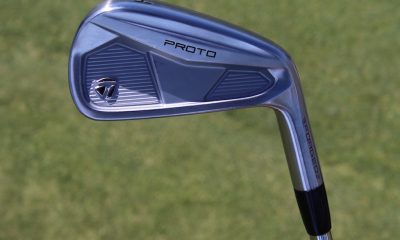

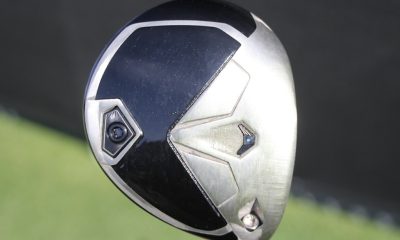

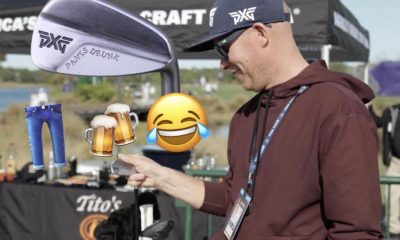

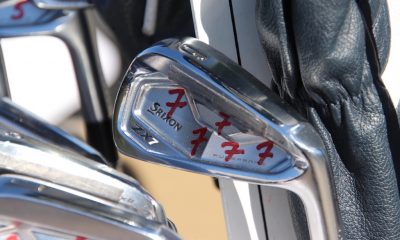

















Bruce
May 19, 2017 at 9:21 am
Written from an OEM perspective; that is, throw away a good idea to preserve the business profits. Quit bringing up red herring non-issues for marketing reasons. If we all played single length and someone introduced variable length, what an uproar that would cause. Golf is a marketing driven business: very very little science (I am a PhD Mechanical Engineer who understands golf science). Single length irons make good sense. Multiple length irons and swing weight matching HAVE NO BASIS IN SCIENCE. These are all marketing.
Mat
May 20, 2017 at 7:29 pm
Actually, multi-length irons have plenty of basis in science. They use length of shaft as one of two main properties that provide distance gaps between irons. By doing this, they can achieve a more consistent descent angle, apex, and distance range within a set.
These are the issues that SLI are working hard to overcome. There have been advancements, but that doesn’t mean they’re perfect. But for a ME PhD to go on about how MLI have no basis is ignorant.
Dave R
Apr 26, 2017 at 10:07 pm
Ken I think you need a hug.
Eddie
Apr 26, 2017 at 6:32 pm
Talent will always trump equipment. No piece of equipment will ever make or break someone’s golf career.
The dude
Apr 26, 2017 at 4:55 pm
What I don’t understand….why it takes someone forever to share their thoughts on a post. If it’s longer than 5 lines…just read the last sentence….
Scott
Apr 26, 2017 at 4:06 pm
Just because you have a different grip with different clubs does not mean everyone else does. And just how many 6′ 4″ juniors do you come across? Wow.
Philip
Apr 26, 2017 at 2:29 pm
They are if you are an OEM that wants to start a new batch of players that will not have an enormous supply of cheaper used clubs to pick from once they grow up and can spend their own money.
cody
Apr 26, 2017 at 1:18 pm
I have a 5 year old girl that i would like to get into golf. I will be honest i dont see a donw side to single length irons to start with. Are you all really saying that a kid cannot switch to more traditional clubs at some point?? c’mon man!!!
Mat
Apr 26, 2017 at 4:09 am
Navel gazing. If a kid is starting out, they get a lower learning curve. Fantastic.
What makes anyone think that the equipment they had as a 14 year old will affect them as an adult? Seriously, if you’re talking about things like apex height and swing weight to a 14 year old, not only is it a relevant conversation, let them choose themselves!
This product is designed for Daddy Upper-middle-class to give to his kid as a starter set that does not suck. This is not, at all, for serious kids. The serious kid MIGHT strip the crap shaft and play something else if they want SLI, but you’re talking a few very good kids with parental bankroll.
Arguing against quality options for kids is not growing the game. It’s the opposite.
AussieAussieAussie
Apr 26, 2017 at 12:35 am
I still can not understand why so many people hate the idea of single length irons? If a kid starts out playing golf with a single length set in years to come- when they have made them for the 3-5yr old age groups, then he or she will know no different than to use single length, to them varying length could be a foreign and ridiculous concept. Ultimately we want to as golfers grow the game- however that be. Relaxed dress codes, cheaper big name brand clubs more realist available, so why not just embrace the change, I’m sure hybrids and lob wedges were seen as a fad at the time of establishment? Yet here we are with most of us having one or both in our bag?! If one length works great, if it doesn’t that’s also fine! I wouldn’t expect you all to go swing like Jim Fuyrk just because it works for him. It’s not likely to work for you but no one begrudges him his success as a result of it?!
Ken
Apr 26, 2017 at 12:09 am
I bought a set of Tommy Armour EQLs many years ago and got rid of them for that exact reason. I couldn’t use my 7 iron left hand grip for the other clubs and particularly for the low loft clubs. Junior golfers who try to use these clubs will limit their progress and likely never make it into the pro tours.
Scott
Apr 26, 2017 at 4:04 pm
That is quite a leap to think that someone starting the game should not start with an easier system, then move into a different set that may work better for them down the road. I started with blades and persimmon woods – certainly a world of difference over today’s equipment.
Andrew you could not be any more wrong.
Scott
Apr 26, 2017 at 4:04 pm
Ken,
As if you could even know that.
Prime21
Apr 25, 2017 at 9:07 pm
It’s like everything else in golf, it will work for some, not for others. Hopefully Cobra is willing to supply a Demo Set so that Juniors could test them out prior to purchasing. Wishful thinking, but a thought!
Ken
Apr 26, 2017 at 12:12 am
Good junior golfers will never adapt to the single length/single shaft lie clubs because it will be too frustrating for younger minds to go through the trial and error phase of conversion.
Scott
Apr 26, 2017 at 4:10 pm
Ken,
Juniors are probably the BEST at going through a learning phase because they can look at things with an open mind and have not been influenced by people such as yourself.
RI_Redneck
Apr 25, 2017 at 8:48 pm
IMHO:
Shafts should have been steel.
Heads should have adjustable weights to adjust for longer lengths for varying heights and as the kid grows.
Price should be lower (steel shafts hep here).
It would have AT LEAST offered length options based on the kids height. Overlooking this greatly hamstrings Cobra’s ability to market these to the young masses. 13-15 yr olds height can vary A LOT. Good concept, but poor marketing.
BT
Steve
Apr 25, 2017 at 2:11 pm
Why is nobody complaining about the insane cost? This is at least at the same cost as a set of regular irons $90 per. How can that ever be good for junior golf?
mvhoffman
Apr 25, 2017 at 2:00 pm
I just have a feeling that these will continue to be developed. Players will soon start to play these from the start of their golf “career”. The USGA will wait, and wait, and wait…. and wait… just like they did with the belly putter, and then find a loophole to take these away and destroy more careers… I’m going to start a thread on this.
Ken
Apr 26, 2017 at 12:16 am
Parents who buy such clubs for their aspiring amateur golfer and hopefully a golf scholarship are only trying to cover up the swing faults of their child. That’s the only reason an adult will buy them too. An expensive band-aid remedy for a poor swing with regular clubs.
Brandon
Apr 26, 2017 at 4:58 pm
Ok, you can say whatever you want, but don’t you even dare thinking about using a putter that isn’t a blade. On that note, trade in your 460 cc driver for a good old fashioned steel shaft 975D driver, as current day drivers are also an “expensive band-aid for a poor swing”.
Tom 1
Apr 25, 2017 at 11:24 am
Yes